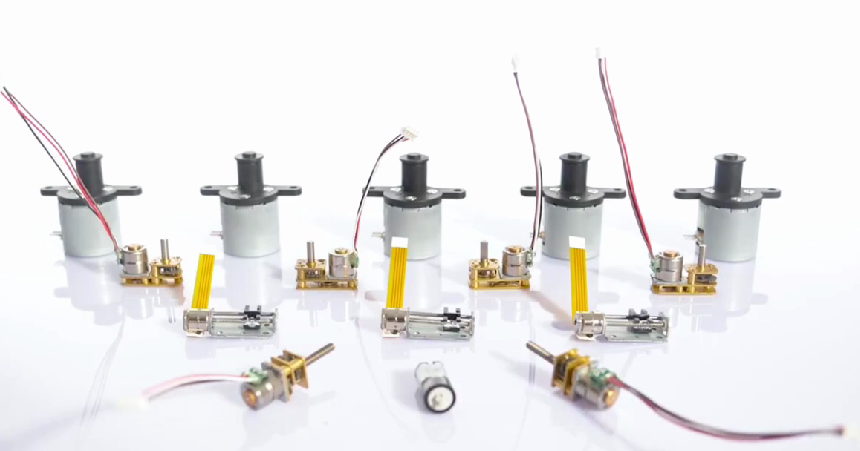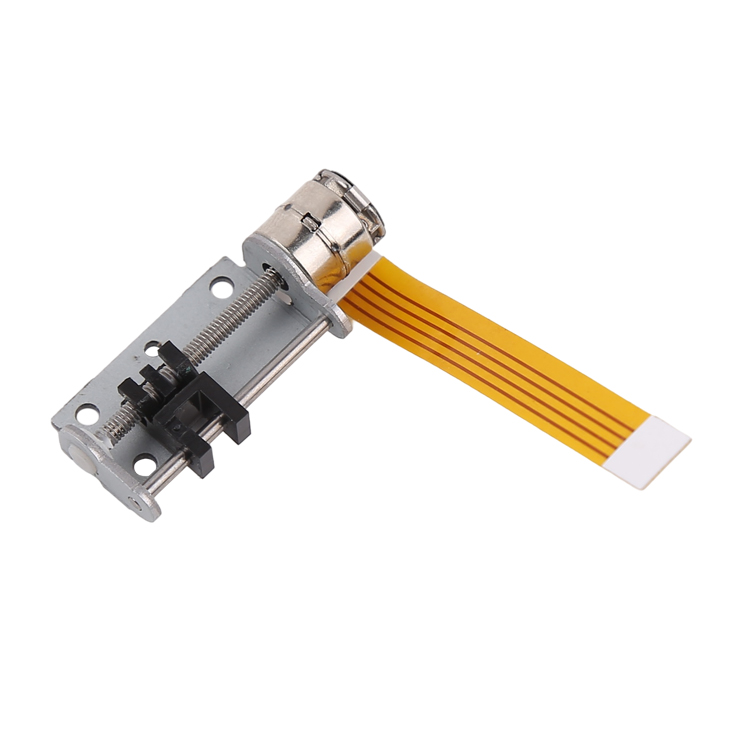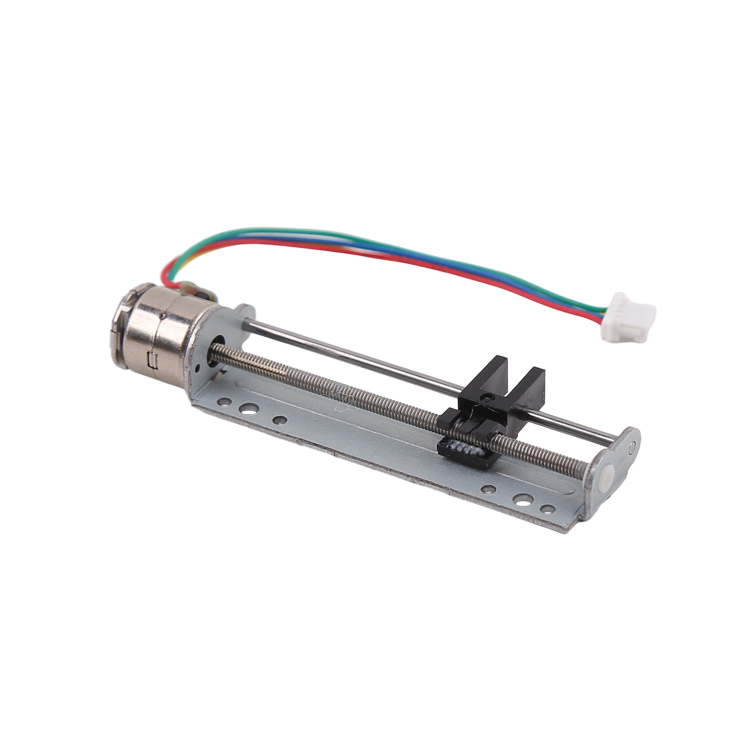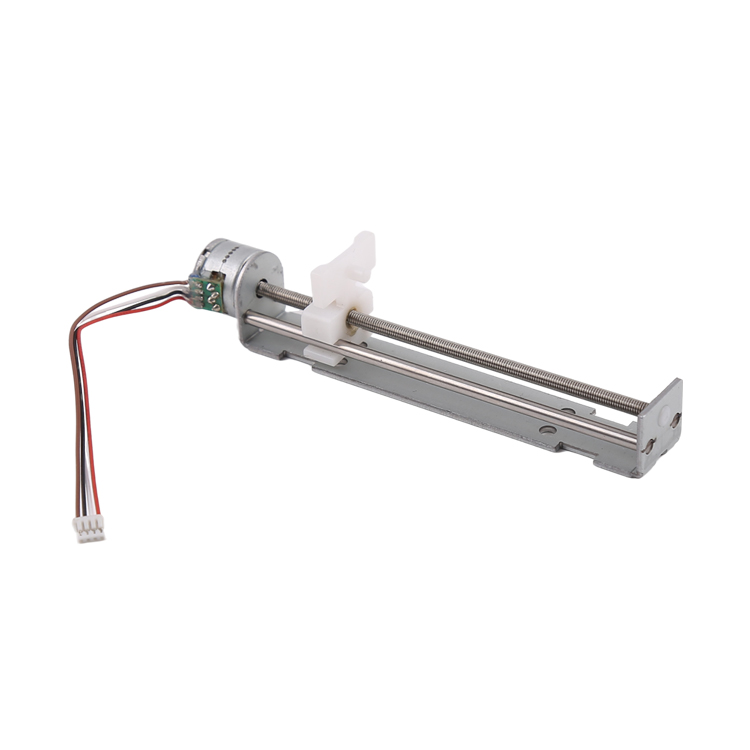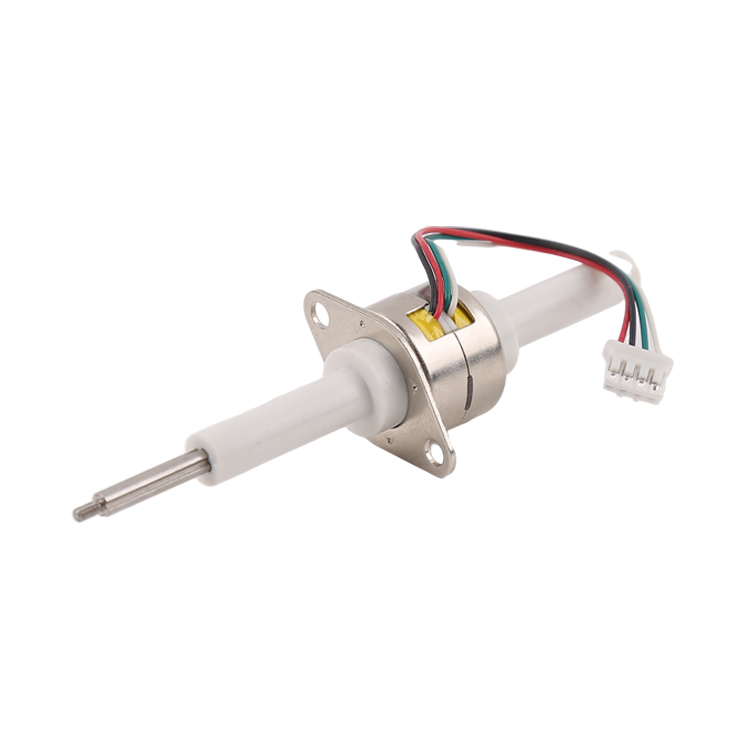Advantages and Disadvantages of Using Micro Linear Stepper Motors
In the world of precision motion control, the micro linear stepper motor stands out as a compact and efficient solution for converting rotary motion into precise linear movement. These devices are widely used in applications requiring high accuracy, such as medical devices, robotics, 3D printing, and automation systems. A micro linear stepper motor combines the principles of traditional stepper motors with linear actuation, offering unique benefits for engineers and designers. However, like any technology, it comes with its own set of trade-offs.
What is a Micro Linear Stepper Motor?
A micro linear stepper motor is a type of hybrid stepper motor designed to produce linear motion directly, without the need for additional mechanical components like belts or gears inmany cases. It typically features a leadscrew integrated into the motor shaft, where the rotor acts as a nut that translates rotational steps into linear displacement. These motors operate on the principle of electromagnetic stepping, dividing full rotations into discrete steps—often 200 steps per revolution for a 1.8-degree step angle, which can be further refined through microstepping to achieve resolutions as fine as a few microns.
The design includes a forcer (slider) and a platen (base), with the forcer containing windings and a permanent magnet. When energized in sequence, the coils create magnetic fields that move the forcer along the platen in precise increments. Micro linear stepper motors are particularly valued for their open-loop control, meaning they don’t require position feedback sensors like encoders, which simplifies system design and reduces costs. They come in captive and non-captive variants: captive types have built-in anti-rotation mechanisms, while non-captive rely on external constraints. This versatility makes the micro linear stepper motor ideal for space-constrained environments, but understanding its pros and cons is crucial for optimal implementation.
Advantages of Micro Linear Stepper Motors
Micro linear stepper motors offer several compelling advantages that make them a popular choice in precision engineering. One of the primary benefits is their high precision and accuracy. These motors can achieve step resolutions down to microns, providing exceptional repeatability for tasks like positioning in CNC machines or laser imaging. This level of control is especially useful in applications where sub-micrometer movements are required, such as in medical syringes or optical systems, allowing for fine adjustments without overshooting.
Another key advantage is their compact size and lightweight design. Micro linear stepper motors are engineered to be small, making them perfect for integration into portable devices or miniaturized machinery. Unlike bulkier servo motors, they fit into tight spaces while still delivering reliable performance, which is why they’re favored in robotics and consumer electronics. This compactness doesn’t compromise on power; they generate significant torque at low speeds, ideal for starting heavy loads or maintaining position under force.
Flexibility in control is a standout feature. Micro linear stepper motors are driven by digital pulses, enabling easy interfacing with microcontrollers and automation systems. They support full-step, half-step, and microstepping modes, where microstepping divides steps further for smoother motion and reduced resonance. This results in quieter operation, particularly at low speeds, where the motor can rotate almost silently. Engineers appreciate this for applications like camera focusing mechanisms or lab equipment, where noise and vibration must be minimized.
Cost-effectiveness is another major pro. Compared to servo motors, micro linear stepper motors are generally cheaper to produce and implement, especially in open-loop systems that eliminate the need for expensive feedback components. They provide high torque without gearing, reducing overall system complexity and maintenance costs. For budget-conscious projects, this makes them an economical alternative without sacrificing essential performance.
Safety and reliability also play a role in their advantages. Operating at lower speeds reduces the risk of sudden movements, making them safer in human-interaction scenarios like automated doors or adjustable furniture. Additionally, their step errors are non-cumulative, ensuring long-term accuracy over extended travel distances. In environments with variable loads, they maintain positioning without drifting, thanks to their inherent holding torque.
Finally, micro linear stepper motors excel in energy efficiency for intermittent use. They only consume power when stepping, unlike continuous-running motors, which helps in battery-powered applications. With advancements in drivers like those supporting up to 128 microsteps per full step, these motors achieve resolutions up to 25,600 steps per revolution, enhancing smoothness and torque consistency. Overall, these advantages position the micro linear stepper motor as a versatile tool for modern automation.
Disadvantages of Micro Linear Stepper Motors
Despite their strengths, micro linear stepper motors have notable disadvantages that can limit their suitability for certain applications. One significant drawback is their poor speed-force relationship. While they deliver high torque at low speeds, performance drops off sharply as speed increases, making them less ideal for high-velocity tasks. This can result in reduced efficiency and the need for oversized motors in dynamic systems.
Vibration and noise are common issues, particularly at low speeds or when resonance occurs. Resonance happens when the pulse rate matches the motor’s natural frequency, leading to torque loss, missed steps, and audible humming. Although microstepping mitigates this by simulating sinusoidal currents for smoother operation, it doesn’t eliminate it entirely and can reduce incremental torque.
The reliance on open-loop control can be a double-edged sword. Without feedback, overloads may cause the motor to lose steps, leading to positioning errors. This is problematic in high-precision environments where even minor deviations matter, potentially requiring additional sensors to close the loop, which adds complexity and cost.
Control circuit complexity is another con. While basic operation is straightforward, achieving optimal performance with microstepping demands sophisticated drivers to handle current regulation accurately. Imperfections in the motor’s magnetic fields or mechanical tolerances can introduce angular errors, further complicating designs.
Heat generation is a concern, as stepper motors run warmer due to constant current in windings, even when holding position. This can affect longevity in continuous-duty cycles and necessitate cooling solutions. Additionally, microstepping limitations mean that while resolution improves, holding torque decreases, and motion isn’t perfectly linear due to non-sinusoidal current-to-position functions.
In terms of integration, non-captive versions require external anti-rotation, which might add mechanical parts and potential failure points. For sub-micrometer precision over long distances, alternatives like piezo actuators might outperform them, especially in vibration-sensitive setups. These disadvantages highlight the need for careful application matching.
Applications of Micro Linear Stepper Motors
Micro linear stepper motors shine in fields like biotechnology, where they drive precise fluid dispensing in pipettes. In 3D printing, they enable accurate layer deposition, while in robotics, they facilitate fine manipulator movements. They’re also used in optical systems for lens focusing and in automotive testing for sensor positioning. Despite drawbacks, their pros often outweigh cons in low-speed, high-precision scenarios.
Conclusion
In summary, the micro linear stepper motor offers a balanced mix of precision, affordability, and ease of use, making it a go-to for many engineers. Its advantages in compactness, torque, and control flexibility are tempered by challenges like resonance, speed limitations, and potential step losses. When selecting a micro linear stepper motor, consider your application’s speed, load, and accuracy needs. With proper design—such as incorporating microstepping or damping—you can maximize benefits while minimizing downsides.
Post time: Oct-17-2025

